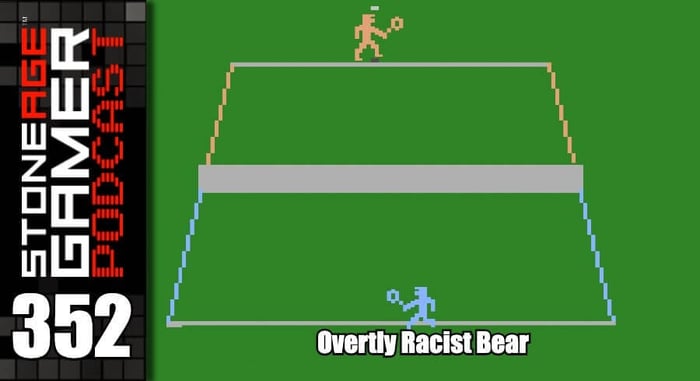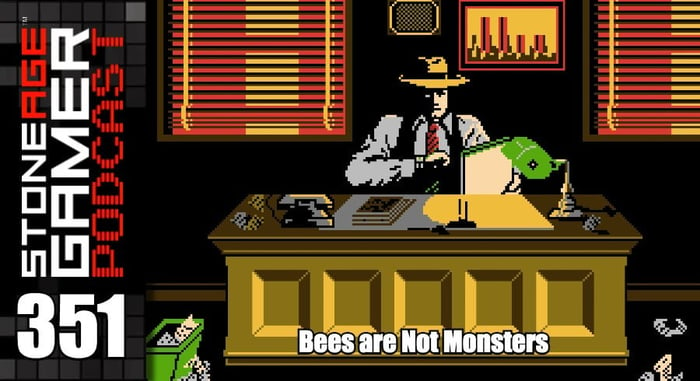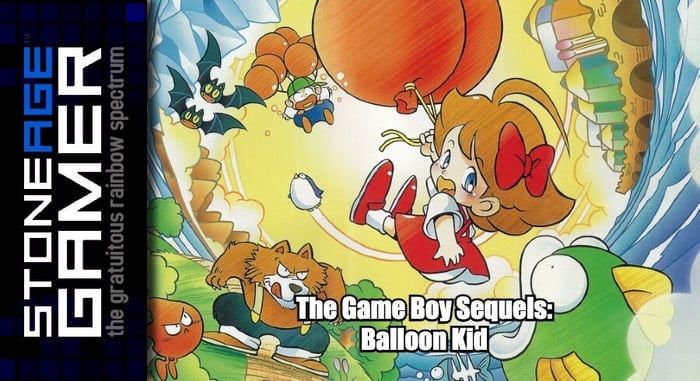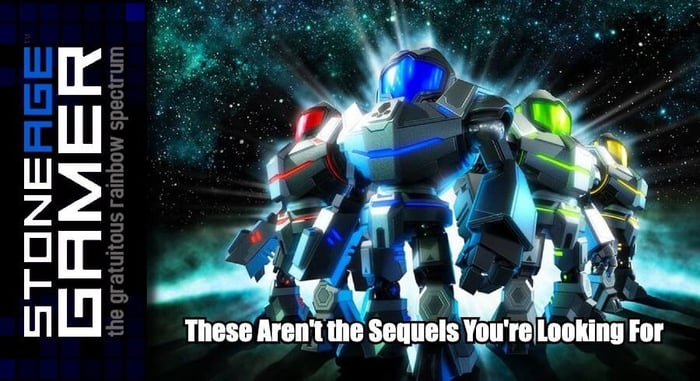
These Aren't the Sequels You're Looking For
Brilliance can be frustrating
Nintendo has a history of being unpredictable. This is often viewed as one of their greatest strengths. It’s what gave us stuff like the Wii and the DS. However, it’s often the primary source of frustration for their fanbase.
This can be looked at from many angles, but in particular I’d like to place a focus on how they create sequels.
For the most part, fans have a basic idea of what they want out of their sequels. When God of War II was announced for PlayStation 2, fans of the first game expected more of what made the original special plus some new items, story elements, etc. And that’s what they got. Fans of Call of Duty want more Call of Duty, and that’s what they get year after year. Fans of Nintendo properties though, well let’s take a look.
Expectations vs. Kong
The first Nintendo sequel I can think of is Donkey Kong Jr. I’m sure there was something else related to their early arcade output, but DK Jr. is the perfect embodiment of Nintendo’s philosophy in relation to fan expectations.
In its day, arcade sequels rarely offered wildly different gameplay experiences. After all, the gameplay loop was what made people pump quarters into the machines, right? So when Donkey Kong set the arcade scene on fire with its 4 levels of fun, it would have been reasonable to expect a sequel with maybe a new powerup besides the hammer, 4 or more all new levels, and maybe some new movement options for Mario.
Instead, we’ve turned Mario into the villain and replaced him with a character who looks and feels dramatically different, and a wild reinvention of the jump and climb mechanics that made the original game a hit. Sure, it was still ultimately about moving your character safely to the top of the screen, but put those two games side by side without the name Donkey Kong in the mix and it’s not exactly obvious that they’re related.
It got even worse with Donkey Kong 3, where it plays out more like a top down shooter than anything else, with platforming all but removed from the gameplay entirely. Donkey Kong was released in 1981, and it wouldn’t be until 1994 when we finally saw a game take the mechanics of the original and evolve them into a proper sequel. The sequel Donkey Kong fans wanted.
Again, this disconnect between Nintendo and their fans is a frustrating one, because often when they make the sequels they actually want, things turn out great. Donkey Kong for Game Boy is a perfect example as not only a way to make fans happy, but it’s also easily one of the best games on the entire platform.
But that’s an odd case where a lot of things went right at the right time. A more accurate example would be The Legend of Zelda.
Subverting Expectations to the Point of Rage
Zelda II couldn't have been a more radical departure from the first game if it tried, but by the third game they followed the template set by the first one and everyone was happy. They got weird with Majora’s Mask, but that followed Ocarina of Time, which was basically the original formula played out in 3D, and people were once again happy.
So when it came time for the new Zelda game, people expected them to once again return to form. They had their fun with an experimental Zelda, but now it was time for what they wanted, which was a grown up Zelda game, like Nintendo showed off in their legendary tech demo.
Nintendo dropped this on them instead.
Now, Wind Waker is my favorite video game of all time. But even I was extremely turned off at that initial trailer. Wind Waker is brilliant and went on to do great things for Nintendo and the GameCube, but the fan outcry at the time should have been the most predictable thing in the world. I will always love Nintendo for sticking to their guns there, but man, things got ugly for a while.
The follow up was a direct reaction to that reaction, and Twilight Princess was really something. It’s not the best Zelda game out there, but it set out to be the Zelda game the fans wanted, and in that they were pretty successful. Of course, once the motion controlled sequel underperformed, they went back to the drawing board and gave us Breath of the Wild, and that’s how you do it. You try stuff, learn what works and what doesn’t, and let that inform how you make sequels.
The Galaxy is Most Certainly Not at Peace
However, often when it comes time to make said sequels, Nintendo just up and does their own thing, audiences be damned. This is naturally very frustrating, especially when they learn all the wrong lessons from the experience.
Nowhere is this issue more pronounced than the Metroid franchise. The original game did well, and Samus became a regular mascot character for Nintendo. The Game Boy sequel was also a success, especially considering the limitations of the platform, and while it wasn’t a sales juggernaut or anything, it was a solid performer and was pretty well liked at the time. And wouldn’t you know it, the game followed a natural evolutionary path from the original.
Then you have what was arguably the pinnacle of the franchise in the form of Super Metroid for SNES and while it again wasn’t the runaway sales success other stuff like Donkey Kong Country was, it certainly was no slouch, and is easily one of the most respected games in history. And surprise! It once again follows the evolutionary chain of taking what worked about the games before it and refining them to a razor’s edge while adding awesome new mechanics to the mix.
It’s what happened after that that’s most frustrating.
Metroid Prime was an excellent seller for the GameCube. So they followed it up with Metroid Prime 2: Echoes, a game that did exactly what a sequel should. But they ultimately learned the wrong lessons from the first game, and ignored some very important trends in the process. Metroid Prime’s biggest issues had to do with its controls, specifically a lack of the now industry standard dual analog control scheme for games with a first-person perspective. The game worked more or less fine as it was, but the lack of finer controls afforded by new technology was a point of contention. Then it released up against the massively popular Halo 2, a franchise that helped cement dial analog controls on consoles, on the struggling GameCube, and sales weren’t so hot.
The games that immediately followed were almost exactly what they should have been given the platforms they were released on, but Nintendo once again failed to read the room. Metroid Prime Hunters was a pretty fascinating attempt to create a multiplayer Metroid experience, but it was on the DS where online play was all but impossible and the controls while functional, didn’t exactly convince the Halo crowd that Metroid was the game they should be playing instead.
Further Control Corruption
Over on the Wii, Metroid Prime 3: Corruption had a couple of things going against it. First, it wasn’t in HD because it was a Wii game and Nintendo decided that the world just wasn’t interested in HD yet. Second, it relied exclusively on motion controls, which while admittedly brilliant, were never going to be for everyone. Even with the Pro Controller in existence, Prime 3 could only be controlled via motion, and FPS fans of the time weren’t having it. Third, the Wii audience was never going to jump from Wii Sports to Metroid Prime 3. The Wii itself found its home in the public eye as a novelty, and was absolutely not a place that core gamers took seriously. It was the Wii Sports/New Super Mario Bros./Mario Kart machine.
This was absolutely not a fair assessment as there were lots of legitimately great games on the Wii, but the public perception was that a game like Metroid couldn’t possibly stack up against the likes of the output on the Xbox 360 or PS3 because the Wii was terribly weak by comparison. A game like that begged to be played on big new HDTVs, which the Wii was nowhere near as well suited to as its competition.
So Metroid Prime 3 and the ensuing Metroid Prime Trilogy sold… fine, but not nearly enough to satisfy Nintendo.
Over on the Game Boy Advance though, Metroid was having a bit of a renaissance. Metroid Fusion was an interesting evolution of the franchise, but people complained that it was a little too talky and hand-holdy. So when they followed it up Zero Mission and it landed right in that sweet spot of delivering a story in a snappy way and guiding the player without being too explicit on where they could and could not go. They had created a bonafide hit, though not on the level of say, Pokemon. Still, many consider it to be one of the best remakes ever crafted by anyone.
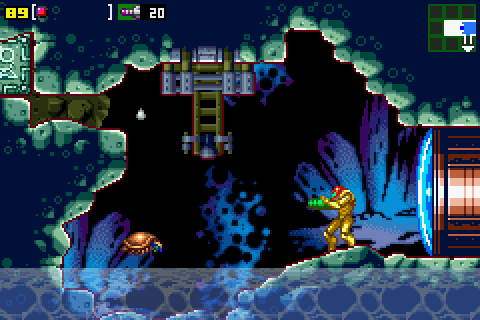
So after Prime 3, what fans wanted was to see what Metroid could be like in 2D like Zero Mission with the power of a modern console behind it. Heck, fans would have settled for a 3D game that was just in 3rd person. What Nintendo delivered was Metroid: Other M, one of the most maligned games they’ve ever published.
Nintendo presumably thought they were giving fans exactly what they wanted, and on paper they were, but in traditional Nintendo fashion, they misread the room and focused their energy on all the wrong places.
New Super Mario Bros. was a tremendous success on the Wii, and one of the things people loved was how it played with the Wii Remote held sideways, just like the NES controllers of old. This worked for New Super Mario Bros. because at its core, it’s commands aren’t all that complicated. Metroid, on the other hand, especially in 3D, called for the complexity of at least a Super NES controller, and since you’d be moving Samus around in a 3D space, an analog stick would be nice.
But New Super Mario Bros. Wii was a huge success, and the lesson Nintendo seemed to learn from it was that people don’t like using analog sticks. So they mandated that the new 3D Metroid game had to be played with a Wii Remote sideways, and the game suffered greatly for it. The same could be said for Donkey Kong Country Returns too, but unlike Other M, that one made it out more or less okay on the other side.
Of course there were more problems with Other M, issues that were made VERY clear by the gaming community. Reviewers and players alike didn’t keep their feelings a secret, and the game ultimately didn’t sell anywhere near what Nintendo expected from it. But what’s most baffling about it was that Nintendo didn’t seem to understand why. Why wasn’t the 3D game that you had to control with a D-pad with bizarre storytelling choices on a system where people don’t buy core games, selling?
Instead of listening to what people were saying about the game, they again presumably (and incorrectly) decided that people must not want Metroid games.
So we didn’t get any more for quite some time. Six whole years, in fact. Fans couldn’t possibly have been more clear about what they wanted. A new Metroid game that didn’t rely on stuff like motion controls or gimmicks. Just a new Metroid game, 2D or 3D, that did what Metroid games did best, but with modern hardware.
So they released Metroid Prime: Federation Force instead.
A Whole New Level of Tone Deaf
A chibi-styled squad shooter on the 3DS, Federation Force barely resembled a Metroid game. The reaction was awful, and not entirely undeserved. In the end, Federation Force isn’t a bad game, and they might have been onto something with Blast Ball had Rocket League not already done effectively the same thing but better, but it’s the kind of spinoff that you can only really get away with when the main franchise is nice and healthy, which Metroid hadn’t been for a very long time.
This time though, it seemed that Nintendo actually did learn the right lesson. Well, almost.
The next Metroid game was the absolutely brilliant Metroid: Samus Returns. It was almost everything people wanted out of a Metroid game, and while the new parry mechanic was a bit on the controversial side, the game was undeniably Metroid through and through.
But again, it wasn’t exactly a sales success, and again, it’s because Nintendo failed to read the room.
The Switch was the new hotness, and the 3DS, while still boasting an absolutely massive install base, wasn’t where people wanted to play games anymore, especially games like this. But instead of doing what Inti Creates did with Blaster Master Zero and releasing a version of the game on Switch, they stuck to their guns and only released it on 3DS.
The game didn’t bomb, but it didn’t do great either, and Nintendo was seemingly left once again scratching their heads. Why did this low resolution, physically demanding game not sell on a system nobody wanted to play games on anymore? Maybe people don’t want to buy Metroid games anymore?
Except, they do! They really do! And if they had just taken Samus Returns and put it on Switch in HD, I'm convinced the game would have done great, especially that early in the Switch’s life.
For generations now, Nintendo has looked at the problem of sequels and too often learned all the wrong lessons. People want a new F-Zero game, and it doesn’t need to be a radical reinvention of the wheel. It just needs to be F-Zero. A Star Fox sequel just needs to be a Star Fox sequel, not some zany 2 screen experience that you need 2 heads to play properly.
Nintendo’s constant innovation is a great thing. Heck, it’s what gave us Metroid Prime in the first place. It’s what gave us The Wind Waker and Four Swords. But it’s also what gave us Federation Force, and kept countless franchises on ice because they couldn’t think of new ways to fix what wasn’t broken.
While It's impossible to tell exactly what’s going on in the minds of the people at Nintendo, they seem frustrated that people don’t want to buy the games they want to make, and often they don’t want to make the games people want to buy. Who is right? It’s impossible to know for sure, but I’ll tell you this. I’m playing Metroid Prime Trilogy on my Wii U right now and I’d gladly pay $60 to play Metroid Prime in HD on my Switch with dual analog controls. And not just the first one. I’d pay $60 for each individually, and I’d do it with a smile on my face.
I’m sure I’m not alone either, and the fact that Nintendo doesn’t seem to know that is as baffling as it is frustrating.


